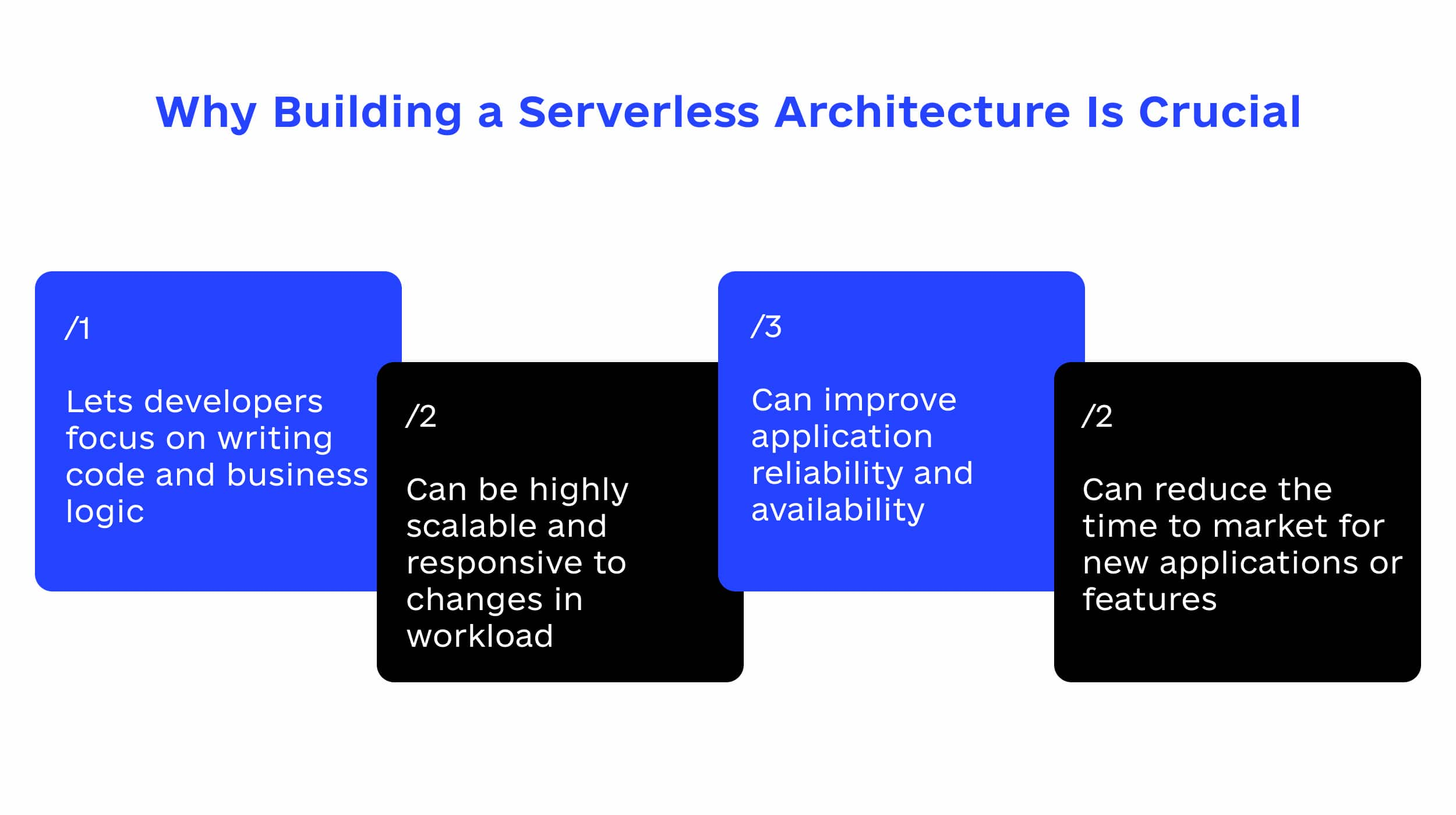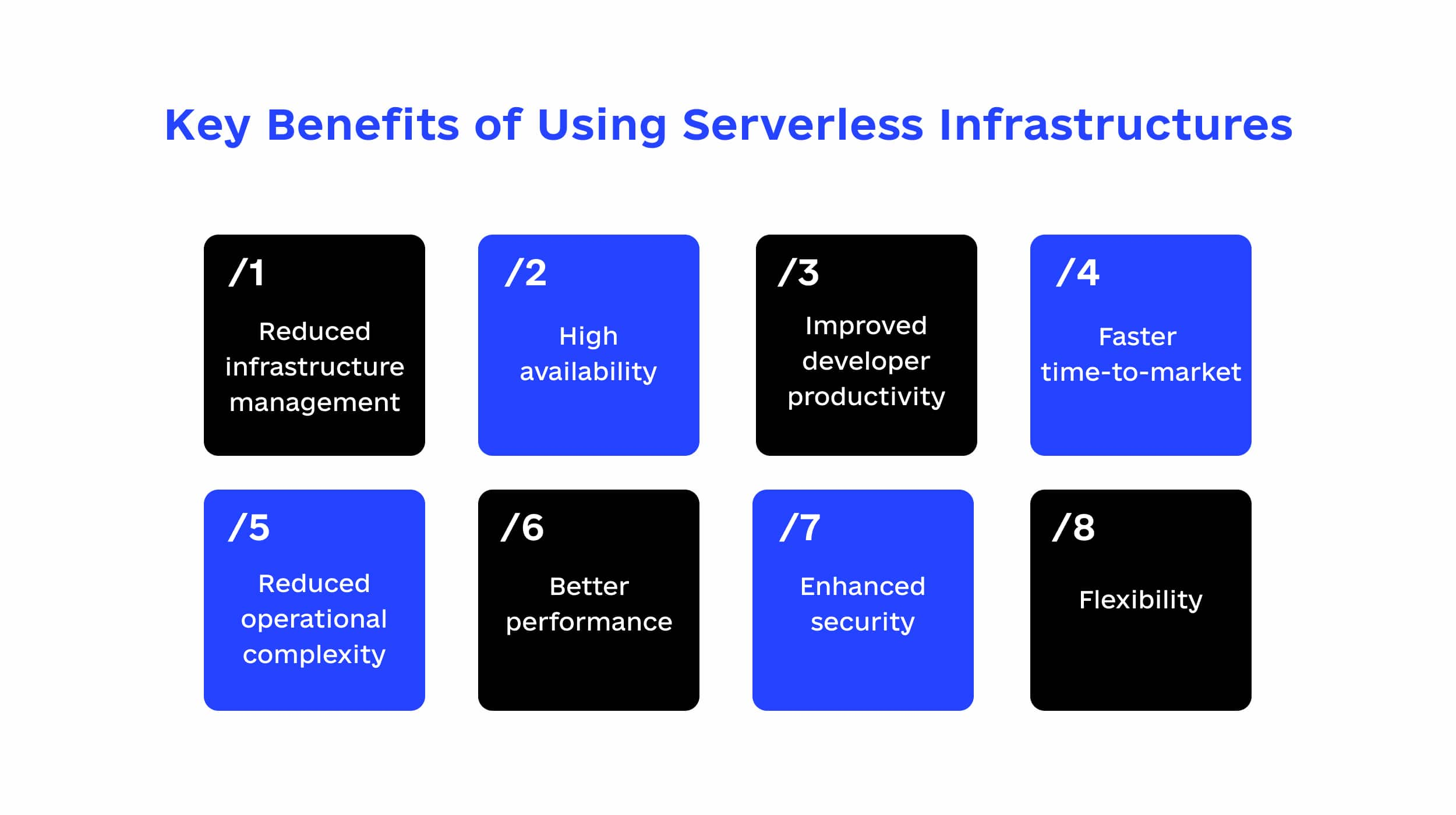Serverless technologies are a relatively new approach to building and deploying applications that have recently gained popularity. The term “serverless” can be a bit misleading, as it doesn’t mean no servers are involved. Instead, it refers to a cloud provider managing the underlying infrastructure, and developers don’t have to worry about provisioning or managing servers.
In a serverless architecture, applications are broken down into small, independent functions executed in response to specific events or triggers. Each function is designed to perform a specific task or set of tasks, and they are often connected to form a complete application.
One of the main benefits of serverless technologies is that they allow developers to focus on building and deploying applications rather than managing infrastructure. This can lead to faster development times, reduced costs, and improved scalability. Since the cloud provider manages the underlying infrastructure, developers can often use built-in security and monitoring features.
Table of Contents
What Is Serverless Infrastructure?
Serverless infrastructure is a cloud computing model where the provider manages the infrastructure and automatically provisions, scales, and manages the resources required to run applications. In a serverless architecture, developers do not need to provision or manage servers, virtual machines, or containers to run their applications.
Instead, they write code in the form of functions executed by the cloud provider only when needed and pay only for the computing resources consumed during the execution of those functions. This model allows developers to focus on writing code rather than managing infrastructure, reducing the time and resources required to deploy and maintain applications.
Examples of serverless cloud infrastructure include AWS Lambda, Google Cloud Functions, and Microsoft Azure Functions, which all offer a platform for developers to build and deploy serverless applications without worrying about the underlying infrastructure.
Serverless Infrastructure Data and Facts
Size
Serverless computing is one of the fastest-growing cloud computing services, with a market size expected to reach $9 billion by 2021.

Cost Cuts
Serverless architecture can reduce infrastructure costs by up to 90%, eliminating the need for managing and maintaining servers.
AWS Lambda
The most popular serverless computing platforms are AWS Lambda, Microsoft Azure Functions, and Google Cloud Functions.
Scalability
Serverless computing allows for highly scalable applications that handle unpredictable traffic spikes without downtime or performance issues.
Event Driven
Serverless architectures are event-driven, meaning that code is only executed in response to specific triggers or events, which allows for efficient resource utilization and cost savings.
Agile Development
Serverless computing can also improve development agility, as developers can rapidly deploy changes and updates without worrying about infrastructure configuration and management.
Security
Security is a critical consideration when implementing serverless cloud infrastructure, as protecting both the code and the data being processed is essential.
Vendor Lock In
Serverless computing can also lead to increased vendor lock-in, as the cloud provider manages the underlying infrastructure, making it more difficult to migrate to another provider or hosting solution.
Why Building a Serverless Architecture Is Crucial
Serverless computing has become increasingly popular because it allows developers to focus on writing code without worrying about infrastructure. However, to ensure that serverless applications are scalable, reliable, and cost-effective, following best practices for serverless infrastructure is crucial. One of the best practices is to design serverless functions as small, stateless, and event-driven microservices. This allows functions to execute independently of each other and scale dynamically in response to workload changes. Additionally, it is essential to use monitoring and logging tools to identify performance bottlenecks, troubleshoot issues, and optimize resource usage.
Another best practice is implementing security measures that protect serverless applications from unauthorized access and attacks. This includes using encryption to protect sensitive data in transit and at rest, implementing authentication and authorization controls to restrict access to resources, and configuring network and firewall rules to prevent malicious traffic. Additionally, it is important to regularly patch and update serverless cloud infrastructure components to ensure they are running the latest security patches and software versions. These best practices can help organizations build secure, scalable, and reliable serverless applications.
Implementing serverless computing provides several benefits, making it an attractive option for modern application development.
- It lets developers focus on writing code and business logic without worrying about server management, capacity planning, or infrastructure maintenance. This frees up time and resources that can be spent on improving application functionality and user experience.
- Serverless computing can be highly scalable and responsive to changes in workload. Serverless functions automatically scale up or down based on the number of requests or events, providing the necessary computing resources only when needed. This ensures consistent performance and helps organizations save costs by paying only for the resources used.
- Serverless computing can improve application reliability and availability. Hardware failures or network outages with traditional infrastructure can cause downtime or data loss. However, the cloud provider manages the underlying infrastructure in a serverless infrastructure, ensuring high availability and fault tolerance. Additionally, serverless functions can be replicated across multiple regions, providing redundancy and disaster recovery capabilities.
- Serverless computing can reduce the time to market for new applications or features. Developers can quickly prototype and deploy serverless functions without worrying about infrastructure setup or configuration. This allows organizations to experiment and innovate faster, quickly bringing new products and services to market.

Key Benefits of Using Serverless Infrastructures
Reduced infrastructure management
With serverless computing, developers do not have to worry about managing servers or infrastructure. This saves time and resources that can be used for developing new features and functionality.
High availability
Serverless infrastructure is highly available and fault-tolerant thanks to automatic scaling, replication, and redundancy
Improved developer productivity
Serverless architecture allows developers to focus on writing code and business logic rather than spending time on infrastructure management.
Faster time-to-market
With serverless computing, developers can prototype and deploy applications faster, resulting in quicker time-to-market for new features and services.
Reduced operational complexity
Serverless infrastructure can reduce operational complexity, eliminating the need for provisioning, scaling, and maintaining infrastructure.
Better performance
Serverless computing can improve application performance, as it automatically scales up or down based on the number of requests or events.
Enhanced security
Serverless architecture provides enhanced security by default, as cloud providers manage the underlying infrastructure and implement security best practices.
Flexibility
Serverless computing allows organizations to mix and match different cloud services, platforms, and languages.

What Are Infrastructure Costs In Serverless Computing?
Several costs exist when running the infrastructure required to run serverless applications. These costs are usually charged by cloud service providers and may include several components, including:
- Compute resources: Serverless computing platforms typically charge for the time and resources used to execute the application code. This may include CPU time, memory usage, and network traffic.
- Storage: Serverless applications may require storing data, code, or other artifacts. The storage cost depends on the amount of data stored and the type of storage used (such as object storage, block storage, or file storage).
- Data transfer: Data transfer refers to the cost of transferring data into and out of the serverless application. This may include network traffic between the application and other services, such as databases or APIs.
- Function invocations: Function invocations refer to the number of times the serverless application is executed. Some serverless platforms may charge per function invocation, while others may charge for the duration of each invocation.
- Additional services: These services may incur costs, such as monitoring and logging, depending on the specific serverless platform.
Conclusion
Serverless computing has emerged as a powerful tool for modern application development.
Serverless computing is ideal for applications that require quick scaling, are event-driven, and have irregular or unpredictable usage patterns. It also allows developers to pay only for what they use, rather than paying for a fixed amount of resources upfront. As serverless computing continues to evolve, it is expected to become even more popular and powerful, with new features and capabilities that make it an even better option for modern application development.
If you’re interested in exploring serverless computing, a great way to get started is by learning more about the different cloud providers that offer serverless solutions and experimenting with building small, simple applications. With some guidance from the right team, you can start taking advantage of the benefits of serverless computing in your projects.
















Popular
Latest